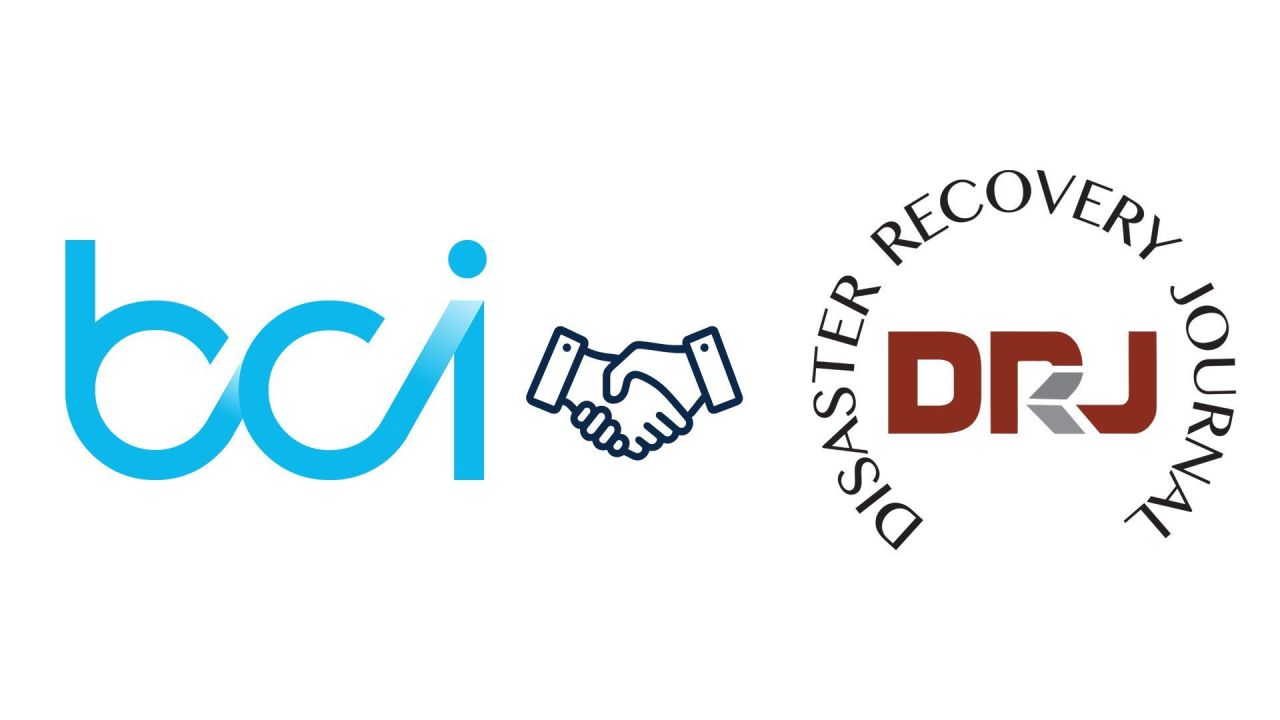Strengthen business continuity skills with BCI training and certifications in French, designed for French-speaking professionals in Europe. Learn more.
COVID-19 : Best Practice (2020)

Learn more about the COVID-19 pandemic development related to business continuity issues (from January 2020 to June 2020)
Premier Continuum's experts have put together 5 best practice leaflets on the management of the pandemic.
Download all the leaflets

Best Practice Issue #1 - The Virus
January 31, 2020
Download the PDF
The new virus, originated in Wuhan, central China, in December. Like SARS, it is transmitted between humans and results in severe respiratory problems. This new virus, called 2019 nCOV, has an incubation period of up to two weeks and contagion is possible during the incubation period, even before symptoms appear.Scientists have successfully replicated the coronavirus in the laboratory, in what they describe as a crucial step forward in the fight against the ongoing viral pneumonia epidemic.The World Health Organization said Thursday that the epidemic is an international emergency but called for travel and trade with China not to be limited. The risk remains low in Canada, according to Public Health Canada.
Case Tracking
According to Le Monde of January 29, 2020
- 213 deaths, mortality is present only in China
- 9,925 confirmed cases of contamination
- 3 confirmed cases of contamination in Canada
Business Continuity Best Practices
Business Continuity Plan Management
- Update contacts (managers, employees, suppliers)
- Validate business continuity solutions that can be applied
Monitoring
- Monitor the situation and report what’s new
- Assess the preventive measures to be put in place
Travelling
- Review travel policies according to the regions visited
- Review telework options where applicable
Awareness
- Assess the need to communicate to reassure employees
- If time permits, perform a tabletop exercise
Messages to communicate in your organization
The organization’s business continuity program is on the lookout for news in connection with this new virus and all necessary arrangements will be put in place when the time comes.
All employees are encouraged to inform the authorities if they have been in contact with someone from the Wuhan area with flu-like symptoms.
Basic hygiene measures and respiratory etiquette are recommended.
Access a chart of infections by country here.
Check out Health Canada’s fact sheet here.
For more tips on how to manage this situation as part of your business continuity program, discuss with one of our continuity experts.
Best Practice Issue #2 - Alert, Preparation and Plans Update
March 4, 2020
Download the PDF
Originating in China in December 2019, COVID-19 is spreading to multiple countries, despite extensive restrictions. To limit the spread, the following hygiene measures are recommended: routine hand washing and staying at home if symptoms are present. Symptoms can take up to 14 days to appear after exposure to COVID-19. Human coronaviruses infect the nose, throat and lungs. They most often spread:
- through respiratory droplets produced when an infected person coughs or sneezes;
- by close personal contact, such as a hand shake with an infected person;
- by touching an infected surface and then touching your own mouth, nose or eyes before washing your hands.
There is no vaccine for COVID-19 yet. In most cases, infected people will recover on their own.
Guidelines for reflection
(These actions consider operations taking place in a region where there is no significant outbreak.)
Coordination
- Update the response structure and set up a monitoring process;
- Keep in mind escalation levels and impact thresholds;
- Keep a record of developments and actions.
Continuity plans
- Validate and communicate telework solutions;
- Confirm prioritized activities, those that could be suspended and employees who could offer support;
- Reassess the need to hold activities/events with many attendees;
- Contact key suppliers to validate their readiness and assess the impacts of the situation on the supply chain.
Human resources and communications
- Review HR policies in response to a pandemic;
- Establish a mechanism for monitoring the status of employees through an information centre (common mailbox);
- Provide psychological help for employees;
- Put up posters encouraging employees to comply with basic hygiene measures;
- Prepare communication templates for employees, customers and other stakeholders based on escalation levels.
Building
- Determine the cleaning, isolation and return protocol for an employee with symptoms;
- Increase housekeeping measures, such as washing door handles, keyboards, desktops and cafeteria tables, telephones, toilets, elevator buttons, coffee machines, etc.
Travel
- Review travel policies and criteria, depending on the regions visited and their importance;
- Inform travellers of what to do.
To discuss your preparation with one of our continuity experts or to use ParaSolution to facilitate the management of the situation, please contact us.
Best Practice Issue #3 - Mobilization and Crisis Management
March 24, 2020
Download the PDF
Here are some additional guidelines considering the evolution of the situation.
Coordination
- Ensure you and your teams get appropriate rest;
- Keep a record of developments and actions;
- Centralize decision-making;
- Model and analyze the projected impacts;
- Focus on your organization’s mission and think long-term, including the opportunities that the new post-pandemic normal may bring.
Human resources and Communications
- Review HR policies as the situation evolves and communicate them to employees;
- Establish a mechanism for monitoring the status of employees through an information centre;
- Provide psychological help for employees;
- Keep employees, customers and other stakeholders informed of the measures in place;
- Prepare messages in advance and use existing channels to speed up communications;
- Maintain a link between teams by leveraging technology and planning regular meetings.
Travel
- Avoid travel including visits to customers and partners.
Lessons learned and feedback will need to be documented to increase community resilience. It is important to properly document the whole intervention, including the good and the bad. It will increase our shared resilience.
- Yannick Hemond, Professor Resilience, Risks and Disasters, Department of Geography, UQAM
Building
- Limit access to cafeteria and common areas;
- Confirm that the protocol is in place regarding cleaning, isolation and return to home of an employee with symptoms.
Continuity Plans
- Confirm prioritized activities, those that can be suspended and employees who can offer support in the event of : decrease in staff availability, need for offloading due to difficulties in connecting remotely, or to limit travel;
- Make sure you can intervene remotely and onsite regarding technology systems. In case of problems, the Quebec government will allow you to go and it may be the case in your province/state;
- If you carry out essential activities and must go to your workplace, consider separating team members either within the same building, in different locations or alternating between work in the office and at home;
- In the event the last option is selected, make sure to carry out thorough cleaning between staff changes;
- If some staff are in contact with people who are infected or at risk, provide additional protective and clean-up measures and consider isolating them from others;
- Contact your key suppliers to validate their status and assess the impacts on your supply chain.
Finance
- Ensure you have the appropriate cash flow;
- If the government instructs the closure of workplaces, consult your insurance policy to validate if you are able to claim your coverage for business interruption if you have subscribed.
To discuss your preparation with one of our continuity experts or to use ParaSolution to facilitate the management of the situation, please contact us.
Best Practice Issue #4 - About Resilience
April 27, 2020
Download the PDF
We can see the light at the end of the tunnel and organizations should start planning the “return to normal.” The following guidelines build on the ones already published.
Resilient businesses are characterized by three aspects:
1. They are pragmatic, face reality and do not fall victim to excessive optimism;
2. They possess strong value systems that infuse an environment with meaning and offer ways to interpret and shape events;
3. They are resourceful and know how to use their strengths to develop new solutions to the unusual situations they encounter.
- Coutu L.D., “How resilience works,” Harvard Business Review, vol. 80, no. 5, 2002, p. 46-55.
Coordination
- Ensure you and your teams get appropriate rest;
- Keep a record of developments and actions;
- Identify trigger points and a timeline to resume operations, including guidance from authorities;
- Build a plan of action to resume operations;
- Perform a debrief with key players and produce a post-mortem report;
- Ensure that identified actions are implemented and that response plans are adjusted and ready for a next wave.
Business Continuity
- Determine, if activities have been stopped, in which order and within which timeframe they must be resumed;
- If you have to return to the office, establishing which order it must be accomplished and whether these actions should be staggered;
- For each activity, evaluate if workload will increase when resuming normal operations, organize how the backlog will be cleared and determine if additional resources are required;
- Contact your key suppliers to validate their resumption plan and speed of operations to assess the impacts on your supply chain;
- Demobilize recovery site(s), review information security protocols and determine if remote accesses will be withdrawn (ability to work from home).
Building and Assets
- Establish what work area adjustments are required to respect social distancing and hygiene requirements;
- Assess if buildings are ready for reoccupation after low occupancy from a health and safety perspective (e.g.: ventilation, cleaning);
- Determine the policy regarding equipment that employees were. allowed to bring home and confirm on-premise availability;
- Establish if visitors will be allowed;
- Communicate protocols that remain in place regarding cleaning, isolation and resending employees with symptoms home
Operational Resilience and Finance
- Consider how the “new normal” can allow you to differentiate yourself from your competitors;
- Examine possible opportunities resulting from your new operational reality, including further integration of remote work and digitalization;
- Analyze financial impacts, record all expenses incurred, perform forecasts and ensure sufficient cash flow is available;
- Claim financial relief you may get from governments;
- Process any insurance claim, if applicable.
Human Resources and Communications
- Determine what percentage of staff is ready to perform their normal business functions (i.e. healthy vs sick, available to work vs taking care of loved ones or appointed to other duties);
- Review HR policies regarding employees who have had extra work due to the situation and offer psychological support;
- Consider how to recreate “esprit de corps” if employees have been temporarily laid off;
- Plan recruitment if employees do not return after being laid off;
- Inform all your stakeholders of your resumption plan;
- Communicate appropriate social distancing and hygiene measures;
- Maintain quarantine protocols in case of symptoms.
Corporate Travel Policy
- Consider allowing visits to clients/partners and clarify protocols;
- Determine criteria to permit travel.
To discuss your preparation with one of our continuity experts or to use ParaSolution to facilitate the management of the situation, please contact us.
Best Practice Issue #5 - Post-incident Review Process
June 23, 2020
Download the PDF
Post-incident reports help build stronger, more versatile, discussion-oriented teams and promote best practice.
Questions to consider :
- What have you learned in the last three months?
- What has your organization learned in the last three months?
- Did you achieve your continuity objectives?
- How effective was your response structure?
- How can it be improved?
- Did you have a specific plan in place for this type of threat, and was it used/effective? If so, how will it need to be adjusted?
Elements of a comprehensive post-incident report :
- Context
- Chronology of events
- Take-aways and recommendations
- Process that will lead to an action plan and follow-up on recommendations
- Attached documents (event logs, phone call records, memos, etc.)
While we have the attention of the most senior levels of the organization, we should explore how temporary measures put in place in response to the pandemic have a value and utility beyond COVID-19. It may mean stepping outside the normal Business Continuity comfort zone to show how continuity workarounds and measures can bring organizational benefits to areas such as staff productivity and wellbeing, but this is a step that is well worth taking.
- Tim Janes Hon FBCI, Chair of the BCI,Coronavirus - A Pandemic Response Report, May 2020
Key success factors of a post-incident review process :
- The main goals are learning and improving practices
- Keep it respectful
- The facts must be presented objectively
- Everyone must be encouraged to participate
- Establish a procedure for documentation
- The process must result in a report that includes suggestions for improvement and recommendations
- Establish a procedure for following up on and applying recommendations
A few additional elements to consider :
- Update and keep an event log of actions taken since the beginning
- Use the “Pandemic Chronology” document (discuss with your Premier Continuum consultant) for a perspective on the measures put in place by governments and your organization
- Conduct post-incident review by theme: Coordination, Human resources and communications, Building and assets, Travelling policy and procedures, Finance, Business continuity and organizational resilience
- Review past PCI documents on best practice
- Establish an action plan for a potential second wave using the recommendations from the post-incident report
- Review your strategies and update your continuity plans to reflect the new normal
To become and remain a learning organization :
- Take a step back
- Review the proposed measures: what worked, what needs to be improved, what might be useful for other exceptional situations
- Understand your successes and failures
- Effectively communicate information
- Review your decision-making structure
- Focus on your team members’ strengths
To discuss your preparation with one of our continuity experts or to use ParaSolution to facilitate the management of the situation, please contact us.









